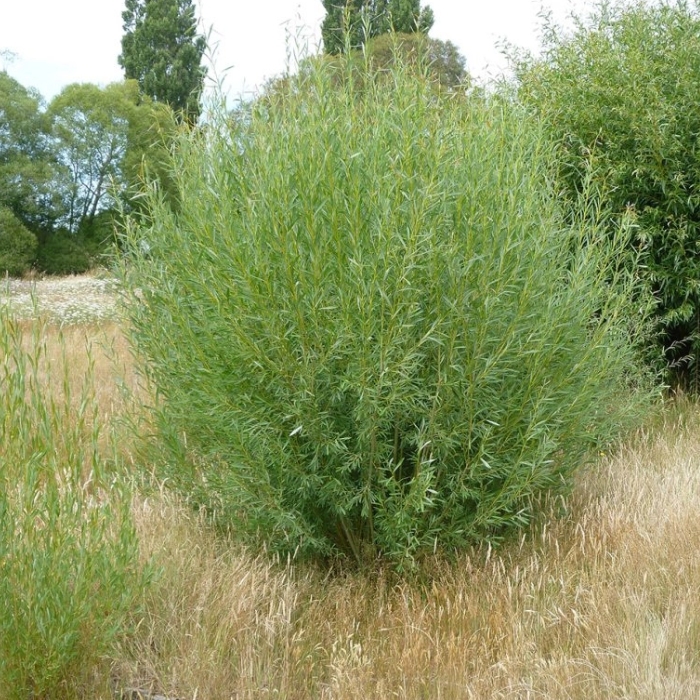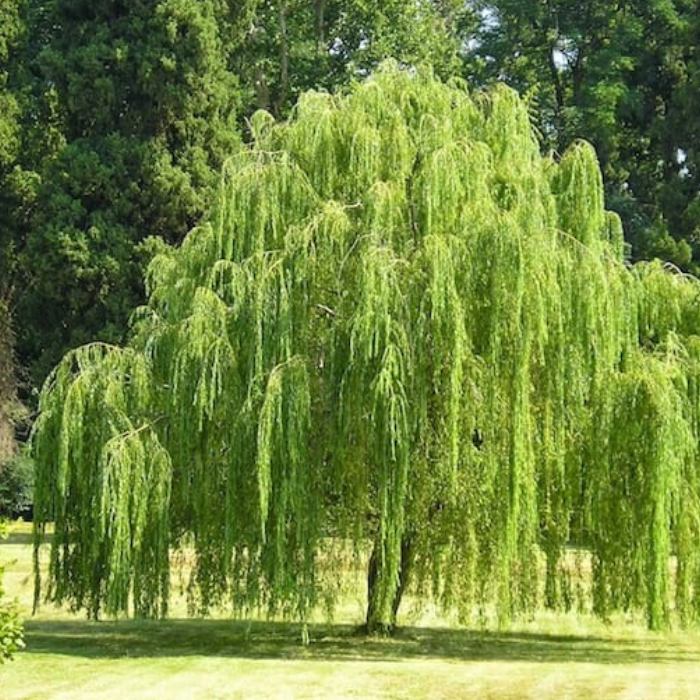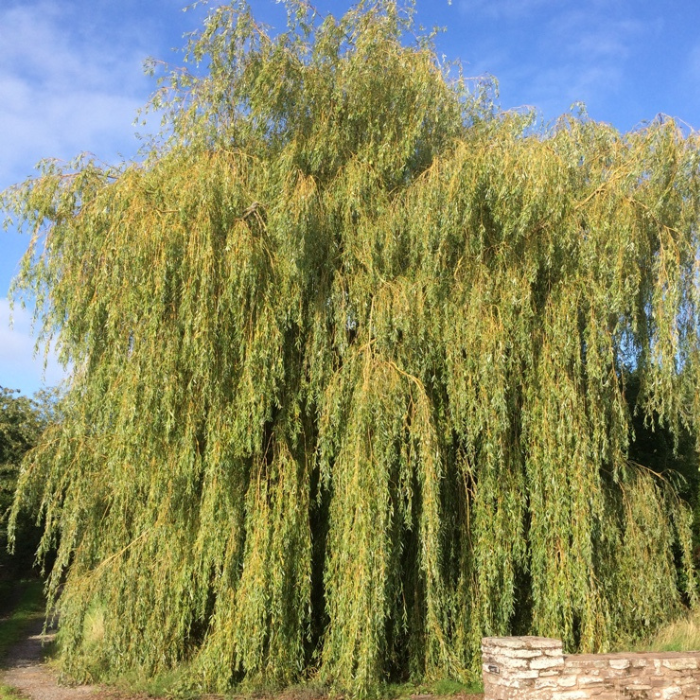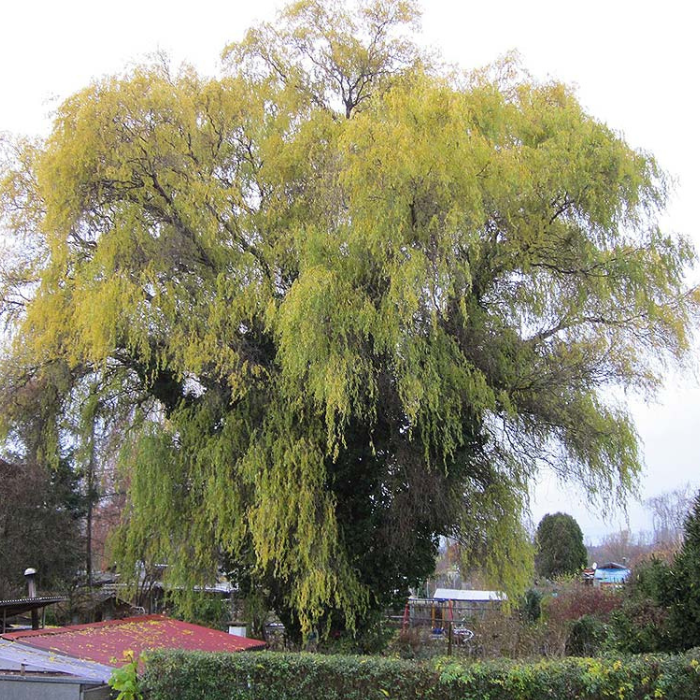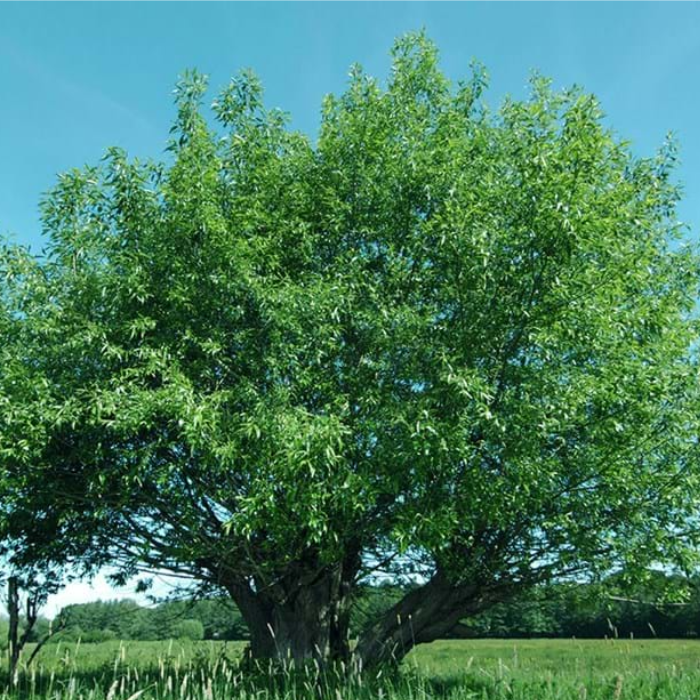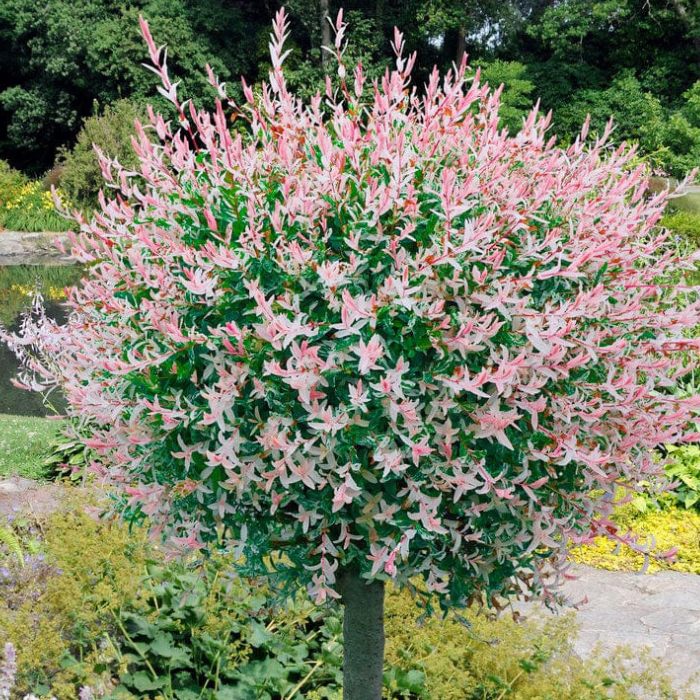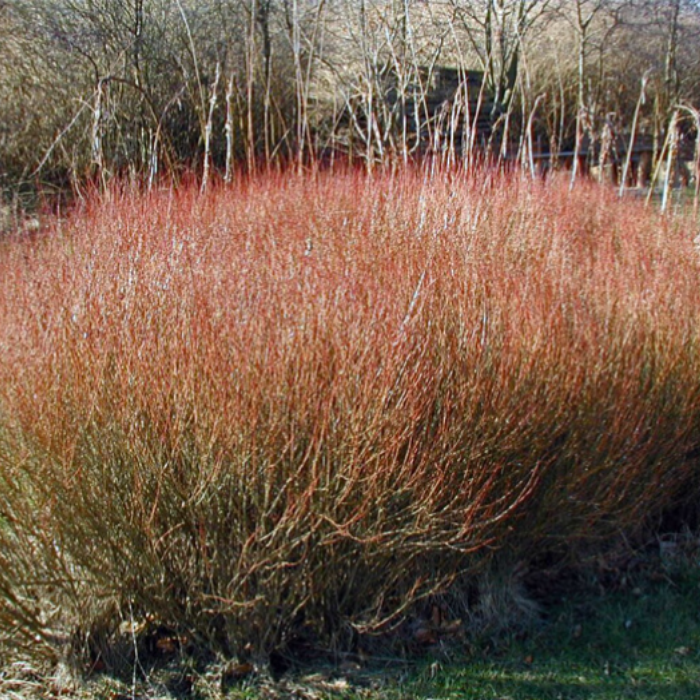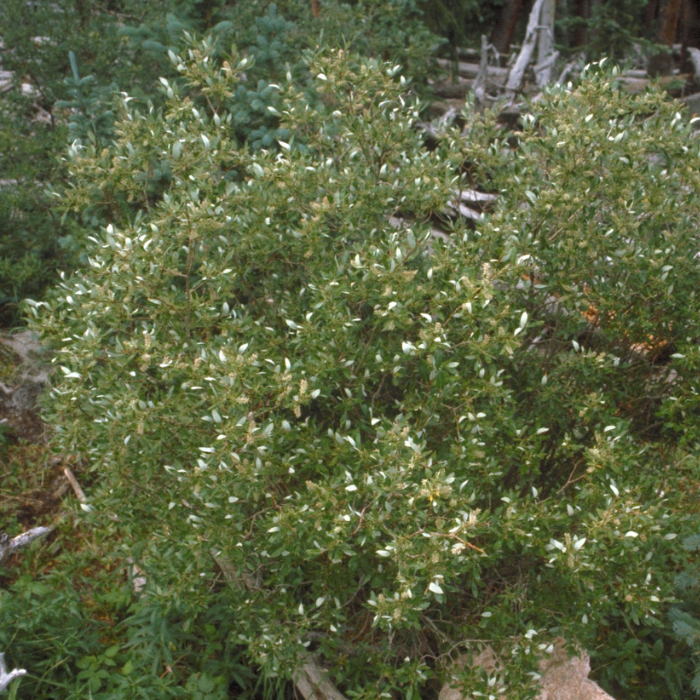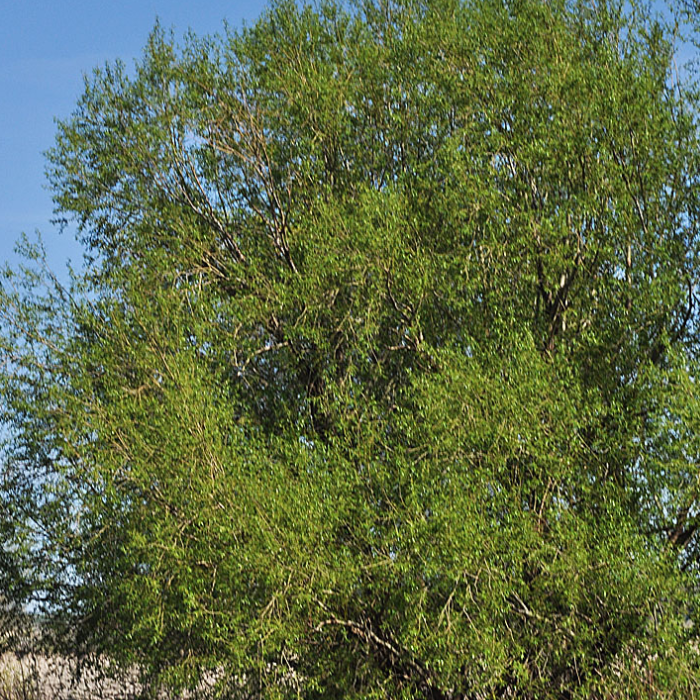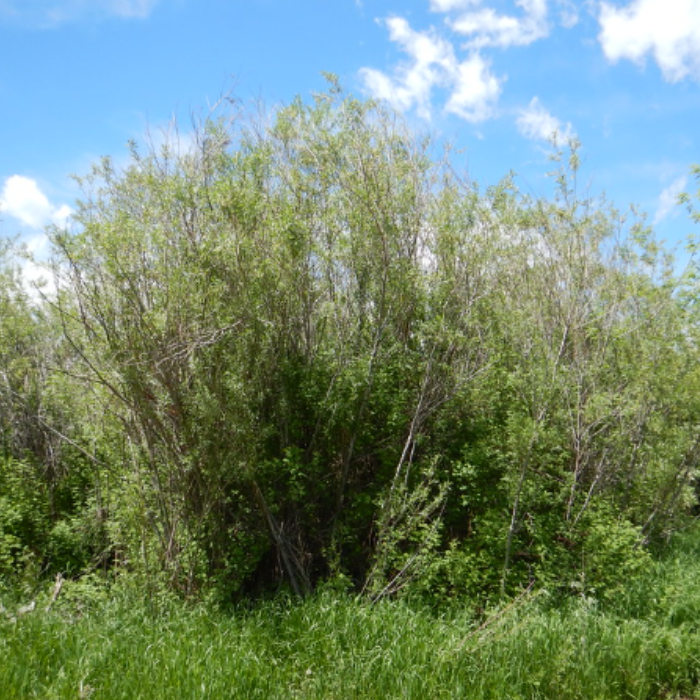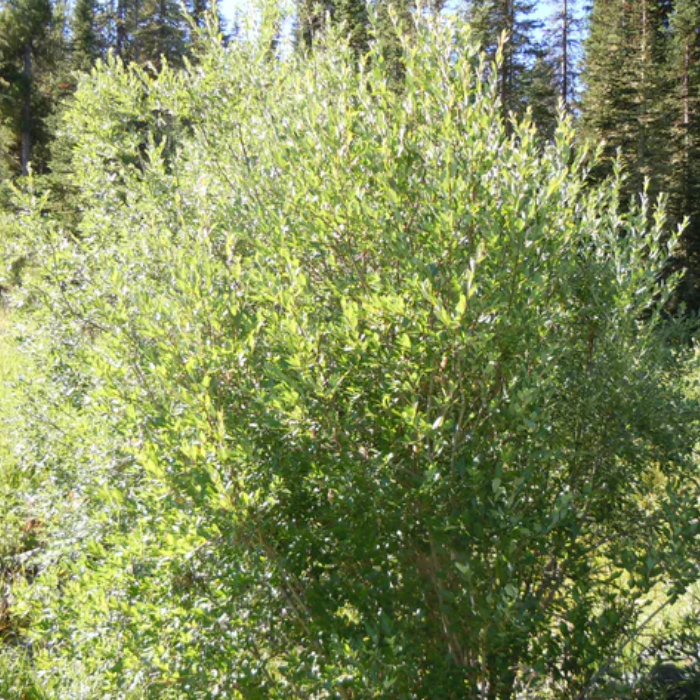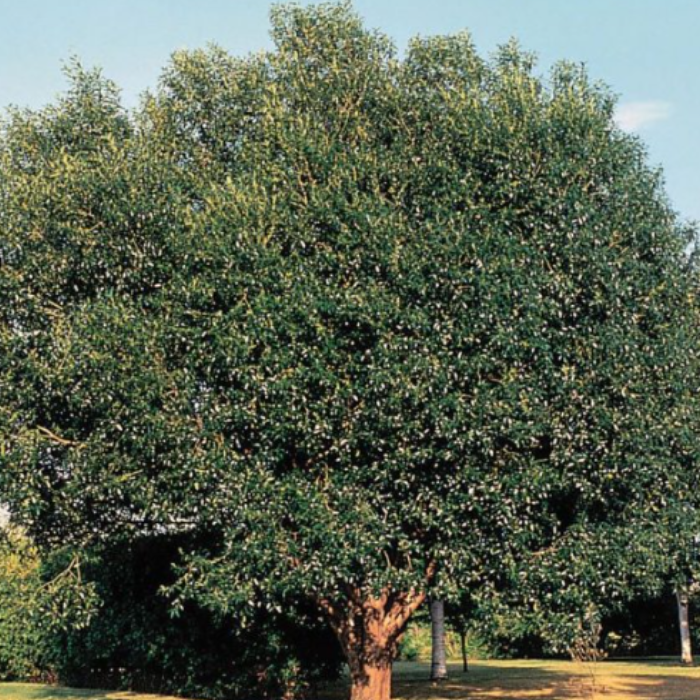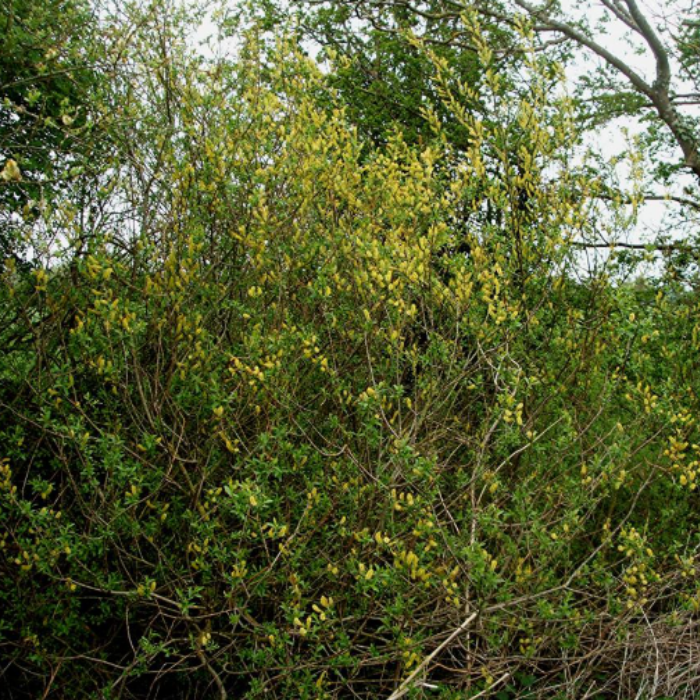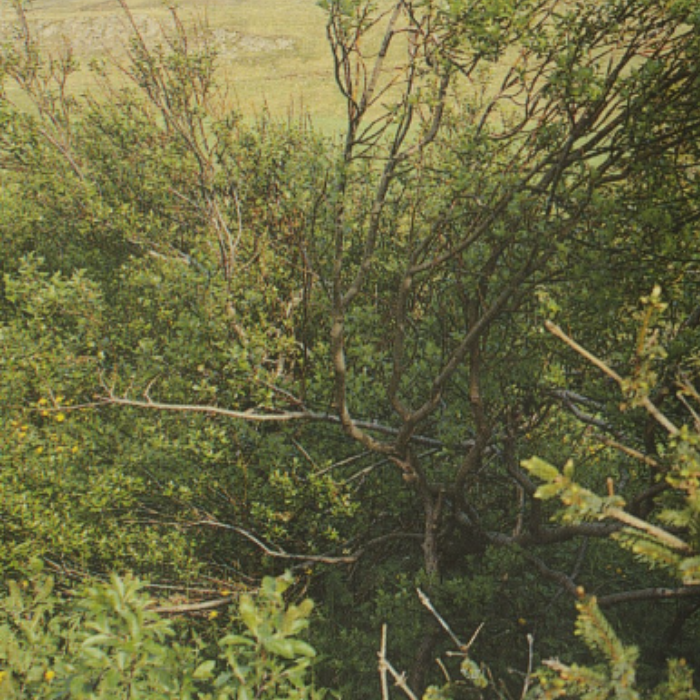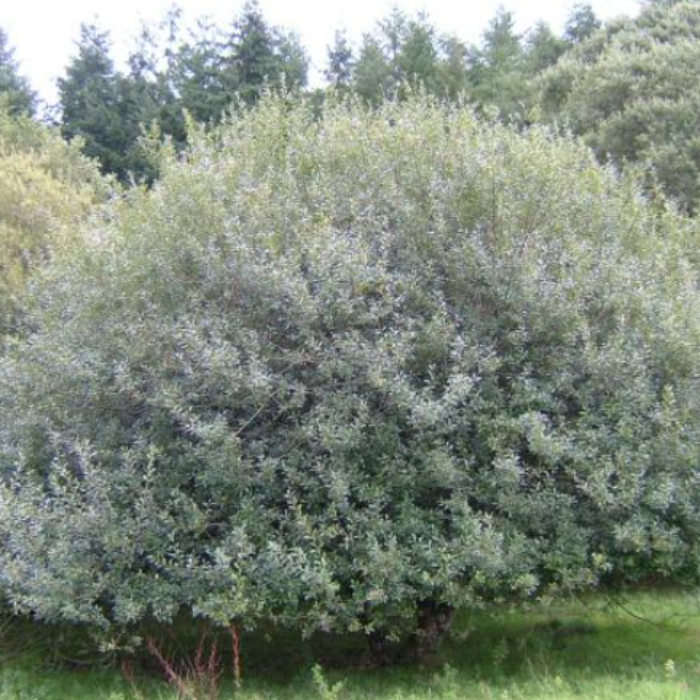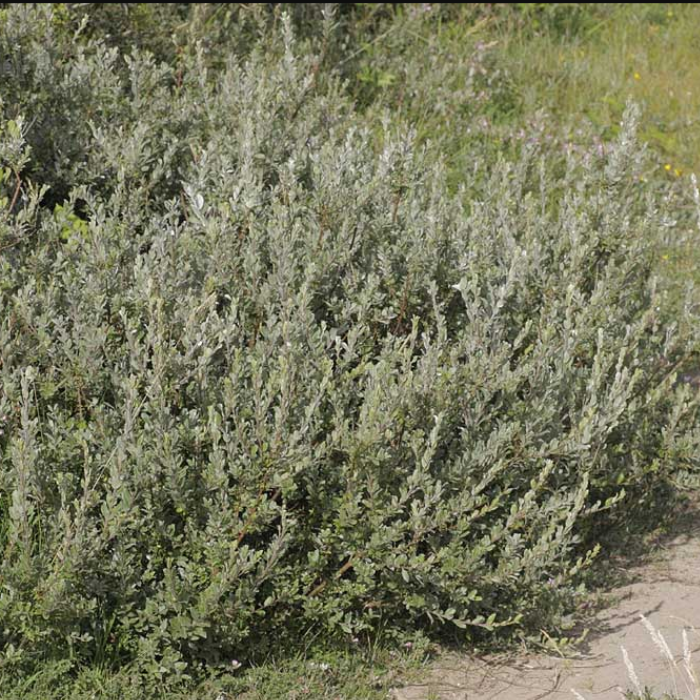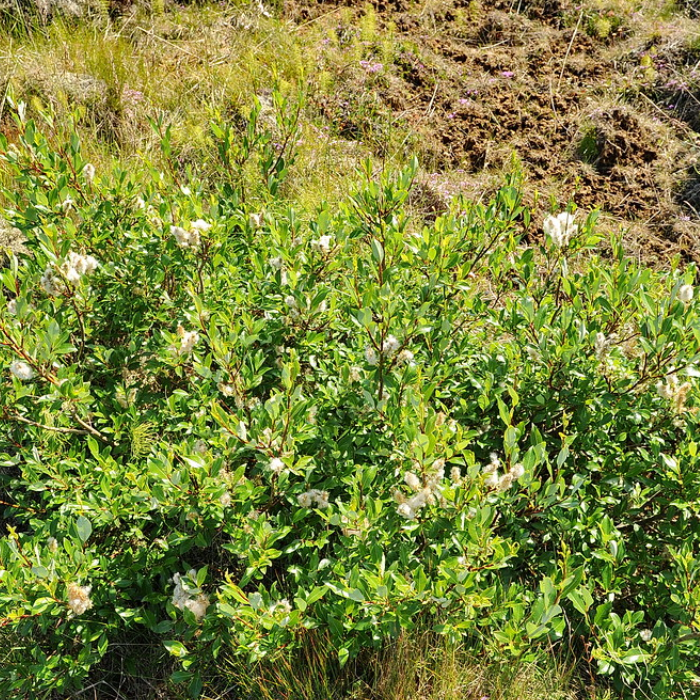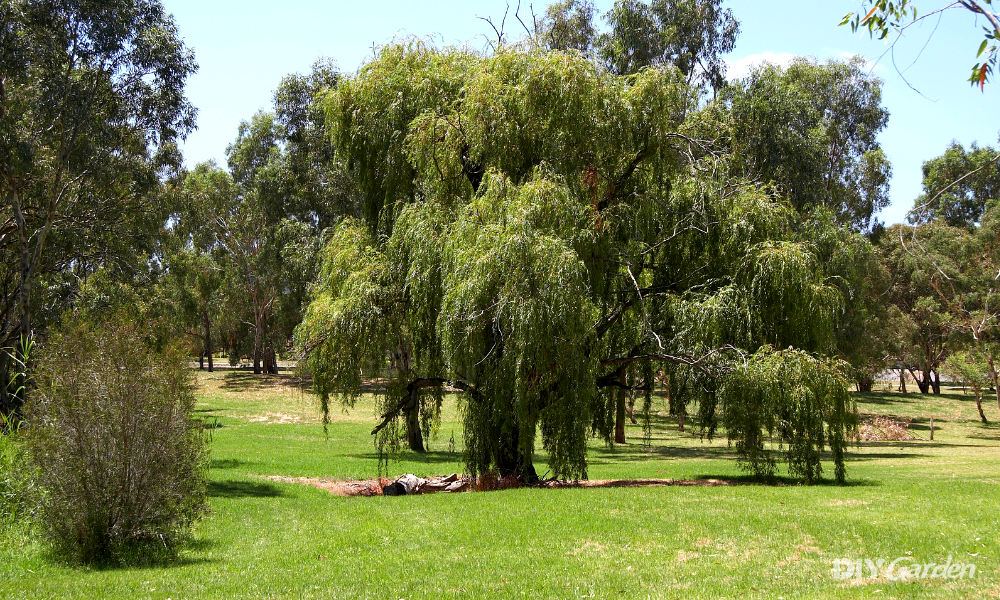
Need a touch of elegance, height, or a stunning focal point to liven up your garden? A willow tree is the perfect solution.
Willows have a lot going for them. They are unquestionably beautiful and have various unique characteristics that make them a worthy addition to any garden.
In this blog post, we’ll unveil 23 types of willow trees perfect for UK gardens, from the classic white willow to the unusual but gorgeous corkscrew willow. Whether you want striking height, eye-catching foliage, or beautiful catkins, we’ve got you covered.
Types of Willow Trees
There are over 400 types of willow trees and shrubs. However, some are more suitable for our colder climate than others. Let’s explore 19 types of willow trees perfect for the UK garden without further ado!
1. White Willow (Salix alba)
White willow is one of the most common willow varieties in the UK. It doesn’t take long to identify why this variety is so popular among us Brits – it’s not only the largest of the whole species – growing up to 25 m tall – but it’s also a native tree, making it hardy to the UK climate.
If you’re unsure what this variety looks like, keep an eye out for its leaves. The white willow’s leaves are hairy when the tree is young, but as it gets older, the tops of the leaves are relatively hairless, but the undersides are still covered!
2. Goat Willow (Salix Caprea)
Creating a container garden filled with interesting plants, shrubs and trees? If this is the case, the goat willow is perfect for you.
The goat willow is often colloquially referred to as “pussy willow” as the male catkins it produces resemble a cat’s paws. These catkins appear just before it sprouts spring leaves, normally in March or April.
Interestingly, you can also get a goat willow with a twist. The goat willow ‘Pendula’ is almost identical to the goat willow in pure species form. However, its branches weep, giving it an extra edge of interest in a pot or container!
3. Osier Willow (Salix Viminalis)
The osier willow is also commonly known as the basket willow due to its unique flexibility. This quality makes it ideal for basket weaving as well as willow structures and sculptures.
I will always remember the beautiful willow structures on the field of my primary school in Cambridgeshire – we used to huddle within them and play all sorts of fun games!
In stark contrast to my primary school (I hope!), this beautiful, broadleaf tree is often grown in waste ground and contaminated areas, as the roots absorb heavy metals, effectively cleaning up the soil!
4. Weeping Willow (Salix Babylonica)
If you’re a willow-lover, you have likely heard of the weeping willow. However, despite what most people think, this variety isn’t a UK native! It originates from the dry regions of northern China.
The weeping willow has a rich history, as it has been cultivated throughout Asia and traded along the Silk Road. But in the UK, you’ll often find its branches arching over lakes or rivers.
If you can’t get enough of the weeping willow and want plants to pair it with, try a mophead hydrangea like the ‘King George’ variety or an astilbe like ‘Younique Carmine.’
5. Weeping Golden Willow (Salix Chrysocoma)
The weeping golden willow is a cross between the white willow and weeping willow varieties, taking the white willow’s hardiness and longevity and combining it with the weeping willow’s arching habit.
This tree does exactly what its name suggests – its branches have a graceful weeping habit and show off glorious, golden-yellow foliage. This makes it highly unique from many other willow varieties, which tend to possess green leaves.
This plant’s vibrance doesn’t stop at its leaves. In May and April, the weeping golden willow produces bright yellow catkins that reflect beautifully over a stream, lake, or river.
6. Corkscrew Willow (Salix Matsudana Tortuosa)
Called the corkscrew willow for a reason, this tree is a cultivar created to accentuate its curling growth pattern. Hence, the best way to identify the corkscrew willow is to simply look at its branches.
The corkscrew willow is best for winter gardens, as its yellow leaves drop in the autumn, allowing you to see the true spectacle that is its twisted corkscrew branches.
Unfortunately, the corkscrew willow’s unique appearance comes at a cost. This tree only lives for 15 – 20 years and is highly susceptible to insect infestations.
7. Blue-Stem Willow (Salix Irrorata)
The blue-stem willow is the first shrub on the list. This plant grows 2.5 metres tall and 4 metres wide in optimal conditions, which include full or partial sun and moist, well-drained soil.
As you may have guessed from its name, when stems first sprout from the blue-stem willow, they’re uniquely coloured – the shade varies from blue to lavender. If you’re a gardener who loves a bit of mystery, then you’ll likely adore waiting to see what shade your blue-stem willow turns out to be!
This is a relatively small willow variety that grows slowly, making it perfect for smaller gardens or a small spot in a larger garden.
READ NEXT: The 33 Best Trees For Small Gardens
8. Crack Willow (Salix Fragilis)
Try the crack willow if neat plants aren’t really your thing. The crack willow is known for the cracking sound it makes when its branches crack and split. And while the sound is pleasant, it’s not the best tree to add to your garden if you prefer everything to be neat and tidy.
Despite this tree’s unkempt appearance, the caterpillars simply love it! Several caterpillars of moth species, like the red underwing and puss moth, can’t get enough of the crack willow. Plus, it makes an ideal nesting site for birds.
9. Flamingo Willow (Salix Integra ‘Hakuro-Nishiki’)
The flamingo willow is a dwarf tree loved for its vibrancy in spring. Usually possessing green leaves in autumn and just coral-coloured stems in winter, the flamingo willow erupts in spring, adding colourful pink tips to its lush new foliage.
You’ll most often find the flamingo willow as a lollipop tree in local garden centres in the UK. This sculpted shape makes it one of the best for small gardens or to flank a front door.
While this plant isn’t a British native, it is extremely hardy, allowing it to cope with the harsh UK winters.
READ NEXT: 37 Front Door Plant Ideas – For Beautiful Pots & Containers
10. Purple Willow (Salix Purpurea)
The purple willow is another willow shrub. This one has a plump, rounded shape and arching stems with a slight purple hue, giving it its name!
If you’re thinking of growing the purple willow, you’ll need to find a damp spot that gets full sun – not an easy combination, I know! Luckily, the purple willow doesn’t mind the soil type it sits in – whether your garden has chalky or shallow soil, the purple willow doesn’t mind! It also doesn’t have a preference over well-drained soil or soil with poor drainage, so long as it remains moist!
11. Yellow Willow (Salix Lutea)
The yellow willow is a beautiful addition to any UK garden, but let’s get one thing straight – it’s not a native. It’s actually native to North America, most specifically central Canada and areas in western and central US.
Like most willows, the yellow willow loves wetter habitats, such as beside a lake, stream, or river. However, they also make an excellent natural hedge or screen. Simply repeatedly chop it down, and this will encourage it to grow in a bushy formation rather than as long, spindly branches.
12. Eared Willow (Salix Aurita)
The eared willow is interesting in that it is a pioneer species – a type of willow that tends to be the first to colonise arid, barren spaces or those that have been recently disturbed and so have less biodiversity.
As you can imagine from this, the eared willow is exceptionally hardy. Therefore, it will grow happily in most spaces. However, if you want it to reach its full potential (3 metres tall and 20 cm wide), you’ll need to plant it in moist, slightly acidic soil.
13. Scouler’s Willow (Salix Scouleriana)
The scouler’s willow is a “riparian species” – this is special, as it has been specifically adapted to grow beside riverbanks, streams, lakes, and other bodies of water due to its ability to control erosion and prevent water runoff.
These qualities make the scouler’s willow the perfect choice if your garden has a pond or stream or is prone to flooding.
And the benefits of the scouler’s willow don’t end there. It’s also extremely valuable to wildlife, particularly butterflies and bees, as it provides an essential food source for them.
14. Peachleaf Willow (Salix Amygdaloides)
The peachleaf willow, also known as the almond leaf willow, is a North American native willow. This plant gained its name from its long, thin, green-yellow leaves, which look similar to the foliage of peach and almond trees. It’s this quality that helps to distinguish the peachleaf willow from other willow varieties.
This is a small to medium-sized willow tree, but it still grows to a lofty 12 metres tall, so your garden may need to be on the bigger side for this one!
15. Narrowleaf Willow (Salix Exigua)
Although not as well-known as some of the other willow varieties on this list, the narrow-leaf willow deserves a spot in the top 23. Why? Because it is extremely adaptable, meaning you can grow it in your garden even if your little space is exposed to harsh conditions.
The narrow-leaf willow will sit in virtually any soil type, not showing a preference – it’ll even quite happily grow in sandy or clay soils.
Historically, the narrow-leaf willow was used for medicinal purposes. Native American tribes stripped the narrow-leaf willow of its bark to treat wounds and relieve fever.
16. Bebb Willow (Salix Bebbiana)
The bebb willow can either be a deciduous shrub or small tree and typically grows between 1.5 and 7 metres tall. However, this plant is native to Canada and the northern US, so it may not grow to such lofty heights over here in the UK.
The bebb willow typically forms a bushy shape with lots of leaves and dense branching. This quality makes it a hit among the local wildlife, as the birds use it for shelter and nesting sites.
17. Bay Willow (Salix Pentandra)
The bay willow is a tree full of mischief – not only does it look like a bay tree, but it also smells like one too! This makes it tricky to distinguish between the two.
However, you can decipher between them by looking at the willow’s young leaves – these are sticky, whereas the older leaves are shiny. Plus, the bay willow produces catkins after its leaves which, of course, the bay tree doesn’t do!
READ NEXT: How to Grow Bay Leaves
18. Almond Willow (Salix Triandra)
The almond willow gains its common name from the pleasant, almond-like scent this plant produces. Due to this quality, as well as its extreme pliability, the almond willow was traditionally used for making baskets, fences, and wickerwork.
This tree is the perfect solution if you want a tree with an interesting appearance in winter but with a longer lifespan than the corkscrew willow. The almond willow can live for up to 50 years so long as you give it moist, well-drained soil and place it near a body of water.
19. Tea-Leaved Willow (Salix Phylicifolia)
Unlike many of the willows on this list, the tea-leaved willow most often takes shrub form. This willow is extremely hardy as it is known to grow anywhere with moist soil in its native region, northern Europe.
The tea-leaved willow is a catkin-producing variety. These catkins not only look beautiful in a garden, but they serve as a valuable food source at a time of year when food is scarce for wildlife. The small seeds contained within are perfect for seed-eating birds like goldfinches and siskins.
20. Shining Willow (Salix Lucida)
The shining willow’s best quality is undoubtedly its leaves. It produces shiny green leaves that are a lighter shade of green on the underside. When caught by the wind, these flutter around, producing a ripple-like effect in the breeze.
But the shining willow isn’t simply a visual delight. It also serves as an important host plant for several butterfly species, particularly Admiral and Camberwell butterflies, as well as Acadian Hairstreak butterflies in the UK.
21. Grey Willow (Salix Cinerea Subsp. Oleifolia)
A tad on the scruffy side but with bucket-fulls of allure, the grey willow is a must-have willow variety if you want a wildlife-rich garden.
Its beautiful, fuzzy catkins not only give pollinators an early source of pollen, but the caterpillars simply adore its leaves.
The grey willow is very similar in appearance to the common goat willow. However, you can decipher between the two by looking at their leaves. The goat willow has long, thin leaves, whereas the grey willow has oval-shaped foliage with silver undersides.
22. Creeping Willow (Salix Repens)
The creeping willow is slightly different to all the others on this list. We’ve seen many trees and shrubs with a characteristic bushy appearance so far.
In stark contrast, the creeping willow is a trailing push. It only reaches up to around 1 metre in height, but it can spread to around 2 metres wide.
This willow variety is low-maintenance, making it the ideal option if you sometimes don’t get time to get out into the garden. Simply place it in full sun, and let it do its thing.
23. Tea-Leaved Willow (Salix Phylicifolia)
This plant is native to the northern hemisphere – you’ll typically find it growing in ditches, meadows, roadsides, and riversides.
The tea-leaved willow tends to be a British wild plant, but it is available as a garden plant, too. You can find it in certain garden centres and online plant shops.
This tree has a long history of medicinal use, as it’s believed to have anti-inflammatory and antioxidant properties. Therefore, it has often been used in shampoos, creams, and lotions.
Final Word on Types of Willow Trees
Willows are classic trees that you’ll notice pop up all over the UK landscape. But with so many to choose from, it can be difficult to know which variety to plant in your garden.
If you’re all for tradition, the white willow, goat willow, or weeping willow are the top picks for you. But if a focal point is what you need, try the corkscrew willow or flamingo willow, as these are sure to capture everyone’s attention!
If you’ve decided on the type of willow tree to buy but are unsure how to prune it, find the best tool for the job in our Best Telescopic Tree Pruners article.
FAQs
What is the most common willow tree in the UK?
The goat willow, also known as the pussy willow or great sallow, is the most common willow species in the UK. It’s a UK native that you will find spread widely throughout the British Isles in hedgerows, woodlands, along riverbanks, and wetlands.
How do I identify a willow?
Willow trees and shrubs typically have long, thin, spear-shaped leaves which are easily identifiable. Get up close and personal, and you’ll notice how these leaves have an extremely fine, serrated edge.
When it comes to how to identify a willow tree in winter, it’s all about the location. Willow trees typically grow beside rivers and lakes, making them easy to spot on a cold winter’s day.
What is a small version of a willow tree?
Dwarf varieties of popular willow species are available if you have a smaller garden or simply want a miniature tree.
Some of the best small versions of willow trees are the dwarf weeping willow, the dwarf purple weeping willow, and the dwarf kilmarnock weeping willow. None of these varieties exceeds 5 feet in height.
Can you keep a willow tree small?
You can keep a pure willow species small by putting it in a container and pruning it back hard each year in later winter or early spring. A pruned willow will spend much of its energy creating new leaves, so it will not grow as much as it normally would.
What types of willow trees have catkins?
All willow trees have catkins, as these are part of a willow’s reproductive structure. However, willow trees can have different types of catkins. Willows are dioecious, meaning they have separate male and female trees.
The male catkins contain stamens that produce pollen, while the female catkins contain pistils that receive the pollen for fertilisation. This separation allows for cross-pollination between different willow trees, which is why there are over 400 varieties!


